Recently on a visit to Cape May, NJ my partner and I stopped by an antique shop that we have visited many times before. I purchased several pieces of ephemera and a TY Beanie Baby Goose named “Loosy.” No, I will not remove the tag, I do not want her to lose her monetary value, haha. I digress, two of the ephemera pieces were postcards that were labeled as lingerie ads. Upon further research, it has been determined by previous scholars that the cards are not lingerie ads but rather illustrated pinup postcards done by Maurice Pepin. (1)
Maurice Pepin’s Pinup Postcards
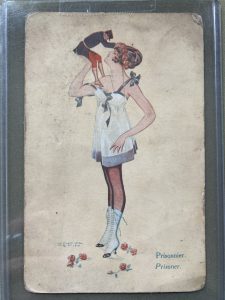
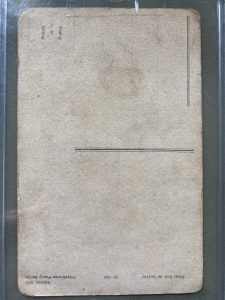
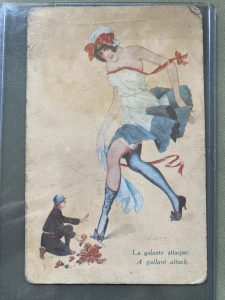
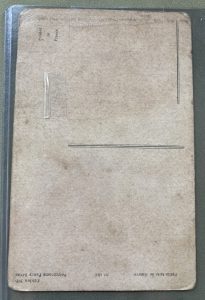
Who was Maurice Pepin?
Little is known about Maurice Pepin, who was also known as Pem, and his fairly short career. Pepin was a French illustrator. He was born sometime in 1890 and died c. 1940 at age 50. It is unknown if Pepin received formal training. The earliest found work of his dates to 1917, which is roughly when the postcards were printed, 1917-1918. Pepin was also published in both French magazines, Fantasio and Le Sourire. After 1920 Pepin’s work was mainly published on the cover and in Le Sourire. This has made some wonder whether he remained an independent illustrator or was fully employed by the magazine. By this time Pepin had adopted the penname of “Pem.” By 1932 it appeared that Pepin stopped illustrating and did not return to it prior to his death in 1940. (2)
Le Sourire
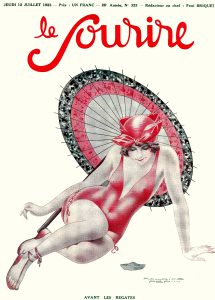
“PÉPIN, Maurice. “Avant les Regates”, Cover of Le Sourire, July 1923.” Image used from Flickr.
Pepin’s work was largely published in the French magazine Le Sourire, translated as The Smile. The publication was an ” illustrated weekly humor magazine.” (3) Pepin’s work included cover illustrations and narrative artwork in the magazine. Because it was more affordable, his artwork was printed in the magazine in duotone. (4) Duotone is “a process for making prints typically in two shades of the same color or in black and one tint by the use of two halftone plates made with the screen set at two different angles.” (5) The magazine ran from 1899 to 1940. (6)
Physical Details of the Postcards
The postcards being roughly from 1917-1918 makes them around 106 to 105 years old. They were purchased already in hard plastic cases, which I have decided to keep the postcards in to help protect them from further damage. The cards are stained with dirt and dust from years of different types of handling and storage. I particularly love the fingerprint on the back of Figure 1. It is unknown when it was imprinted and who the fingerprint belongs to but it is evidence of someone who had handled the postcard within its lifetime.
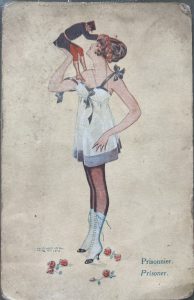
Figure 1
Both cards consist of a woman wearing lingerie-type clothing and interacting with French military personnel who are much smaller than the woman. On each postcard, the woman is asserting power over the military member. In Figure 1., the woman is holding the man up with one hand to her head with him pushing against her with all four of his limbs. The size difference and her holding him with one hand versus him who is pushing on her with both arms and legs convey to the viewer that she is the one in power. The title of the postcard, “Prisonnier. Prisoner.” confirms the power relationship between the two individuals in Figure 1. He is her prisoner.
Figure 2 reflects the same power dynamic power as Figure 1. Once again, there is a drastic size difference between the woman and the French Military Member. To add to the size difference, the woman is standing up while the man is kneeling down on one knee, which makes him appear even smaller. The woman is in a walking motion while the man is still, holding his one arm up either in preparation for the impact of the woman or to try and get her to stop. Either way, she is the offensive while he is in the position of the defense. Again, the title, “La galante attaque. A gallant attack.,” of the postcard confirms the described interaction between the two individuals on the postcard, and once again, the military member is at the mercy of the woman.
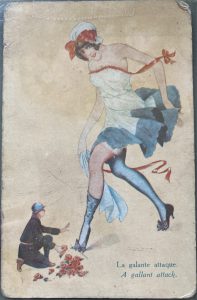
Figure 2
Conclusion
These postcards are fantastic and so much more analysis and research could be done with them. Such as, why are the power dynamics reflected the way that it is in the postcard? Does that tell you more about sexual desire and sexual taboos of the time? Looking further into the postcards and the larger series that they were a part of can also be done. Reviewing the postcards, we are able to learn about all the different people and publications that they were connected to. It is always amazing to see the larger life of the ephemeral pieces, while still knowing so little about the life they have lived prior. Although more analysis can be done on the postcards, we will end it here. – Thank you for reading!!
fin.
Sources:
(1) Pete Beard, “Unsung Heroes of Illustration 28.”
(2)Pete Beard, “Unsung Heroes of Illustration 28.”
(3) Le Sourire, Wikipedia.
(4) Pete Beard, “Unsung Heroes of Illustration 28.”
(5) “Duotone Definition,” Merriam Webster.
(6)“Le Sourire,” Notice Bibliographique: Notice de périodique.

Leave a Reply